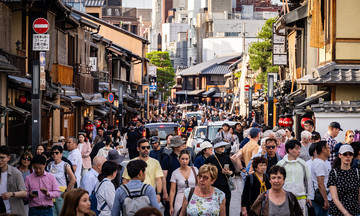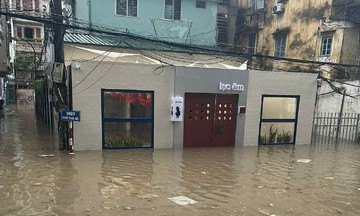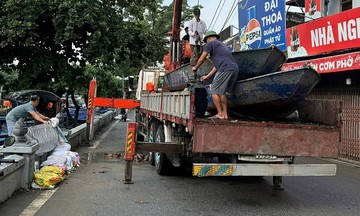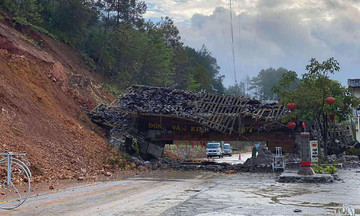On 15/8, a group of German tourists diving near Hon Bac island with Vietnam Underneath Dive Center (Nha Trang) encountered a seabed littered with dead fish. Many were small, with ruptured bellies and missing eyes. The surrounding hard and fire corals were broken and shattered, "as if a major destructive force had just passed through," they reported.
When the group questioned the cause, their dive guide explained that it was likely the result of blast fishing.
Similar observations were made by a Nha Trang resident who dived in the same area on 10/8 and 16/8, capturing the scene on video.
"I observed the broken coral area to be about 20-30 square meters, and dead fish covered an area of about 100 square meters," the diver said.
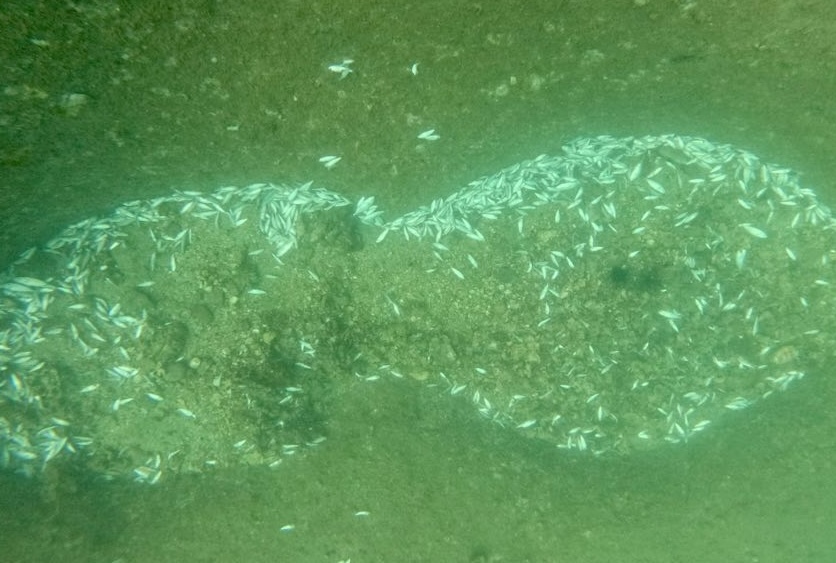 |
Dead fish on the seabed near Hon Bac island, Khanh Hoa. Photo: NVCC |
Dead fish on the seabed near Hon Bac island, Khanh Hoa. Photo: NVCC
Nguyen Quang Huy, a PADI Master Scuba Diver Trainer with 10 years of experience, stated the fish deaths and coral damage at Hon Bac bear all the hallmarks of blast fishing. The shockwave from an underwater explosion kills fish en masse and snaps coral branches, unlike the uprooting caused by boat anchors.
"It's highly likely that fishermen detonated explosives and then left without retrieving the fish due to the passing tourist boat," Huy said. He expressed outrage at this act of "ecological destruction," posing a danger to both the environment and divers.
In water, where sound travels four times faster than in air, an explosion even hundreds of meters away can harm divers. "At close range, divers can suffer ruptured eardrums, water entering the ear canal, disorientation, dizziness, and irregular heartbeat," he warned, speaking from personal experience.
Dead fish at Hon Bac on 15/8. Source: Quang Huy
Huy recounted two dangerous encounters while teaching diving in Quy Nhon in 2019 and 2020.
"I was at a depth of 21 meters when I heard a distant explosion. I immediately felt intense water pressure on my chest and had to surface quickly. Upon reaching the surface, I saw dead fish covering the nearby waters," he recalled.
Blast fishing is also dangerous for the fishermen themselves. Huy has witnessed cases of lost limbs due to premature detonations. Fishermen time the fuses to target fish at different depths, but miscalculations can lead to explosions in their hands, causing severe injuries or even death.
Aside from the unsightly scene underwater, decaying fish can release toxins if not removed promptly. Creatures like crabs and lobsters act as the "ocean's waste disposal system," helping decompose organic matter. "If these species are overfished, the natural cycle will be disrupted," Huy warned.
Hon Bac in Nha Phu bay, located near resorts, is increasingly popular with foreign tourists for swimming and diving. According to Huy, blast fishing isn't limited to this area; it also occurs in more remote locations like Hon Do, Van Phong bay, and Hon Trau Nam.
Le Minh Tam, chairman of the Dong Ninh Hoa ward People's Committee (UBND), acknowledged the long-standing issue of illegal blast fishing in Nha Phu bay. Local authorities have increased patrols and addressed violations, but some continue to operate clandestinely.
Broken coral and dead fish at Hon Bac. Video: NVCC
"Nha Phu bay is a vast area, and blast fishing often happens in remote waters at night, making it difficult for authorities to control," Tam said.
According to diving expert Quang Huy, blast fishing has long-term consequences. Damaged coral can take two to 10 years to regenerate, depending on the species. Some broken branches can be salvaged and reattached to supports. However, both natural and artificial recovery require time and stable environmental conditions.
One successful solution implemented in Thailand is the creation of artificial reefs. Concrete blocks, old ships, or stone statues are placed on barren sandbanks, and coral is then transplanted onto these structures. Over time, these become new dive sites, relieving pressure on natural reefs.
Vietnam has successfully restored hard coral. In 2023, the Institute of Marine Research successfully restored hard coral in Cat Ba National Park and Bach Long Vi marine protected area with a high average survival rate and good adaptability to weather conditions after three years. At Cat Ba, experts restored over 3,400 square meters of coral reef and established a buoy system for reef protection. At Bach Long Vi, the small fragment method was successfully applied to restore branching coral in severely degraded reefs.
As a long-time diver, Huy believes divers are "living cameras" underwater, providing valuable data for research and conservation.
"We dive two times a day, sometimes even at night, and everyone carries a personal camera to document the coral, depth, water clarity, and reef condition," he said, adding that if regularly compiled, this data would be invaluable for scientists, eliminating the need for multi-billion-dong investments in underwater cameras.
Analysis of remote sensing images and machine learning data, published in June by the Vietnam-Russia Tropical Center, covering a 160 square kilometer area, revealed that from 2002 to 2024, Nha Trang bay lost approximately 191 hectares of coral reef, mainly around Hon Mun, Hon Mot, Hon Tam, Hon Mieu, and Hon Tre islands. Hon Mun, once considered the most beautiful reef in Nha Trang bay, remains closed for restoration after extensive damage.
"Hon Bac in Nha Phu bay was once considered pristine, but if blast fishing continues, it risks becoming another 'dead zone'," Huy warned.
Nha Phu bay, spanning approximately 1,500 hectares, is located about 15 km from Nha Trang city center. While smaller than Nha Trang bay (24,965 hectares), it boasts a diverse ecosystem with 232 phytoplankton species documented by the Nha Trang Institute of Oceanography. The area's mountains, rivers, lakes, and islands are ideal for tourism and aquaculture. Recently, sunset cruises on small boats have become popular, thanks to the calm waters suitable for anchoring.
Bich Phuong - Bui Toan




